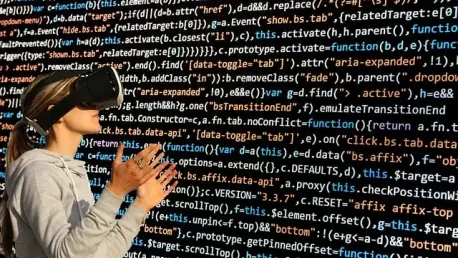Virtual Reality (VR) and Augmented Reality (AR) are reshaping modern life and numerous industries, transforming from niche applications into powerful mainstream tools. These technologies have transcended traditional screens, merging digital and physical realms in ways previously thought impossible. VR immerses users in fully digital environments using headsets, making it invaluable for training and simulations. On the other hand, AR overlays digital elements onto the real world through smartphones or tablets, enhancing everyday tasks like shopping, navigating, and learning.
Driven by rapid advancements in hardware, VR and AR experiences are becoming more accessible and powerful, enabling their integration into a wide array of industries. Although gaming and entertainment have been among the most publicized uses, VR and AR’s impact extends far beyond. In healthcare, VR allows medical students to practice surgeries in a safe, virtual setting, reducing risks associated with real-life practice. AR, meanwhile, lets consumers visualize products in their homes before making purchases, revolutionizing the retail sector. These examples are but a fraction of how VR and AR are seeping into diverse facets of everyday life.
The trend of accelerated growth in VR and AR technologies shows no sign of slowing, indicating their potential as major components of future technological landscapes. Their increased integration into our daily routines, much like smartphones, suggests these are not fleeting trends but enduring innovations. As more industries recognize and adopt these technologies, they unlock new possibilities in how individuals interact with the digital and physical worlds.
Technological Innovations and Industry Applications
The rapid advancements in VR and AR hardware have been critical in propelling these technologies into the mainstream. Enhanced display resolutions, reduced latency, and more intuitive interfaces have led to a surge in VR and AR applications across various sectors. In healthcare, VR is revolutionizing medical education and patient care. Medical students can practice complex surgeries in a controlled, virtual environment, minimizing risks and improving their skills before encountering real-life scenarios. Additionally, VR is being used for patient therapies, such as treating PTSD and phobias, by immersing patients in controlled, therapeutic virtual environments.
Besides healthcare, VR and AR are making significant inroads into industries like real estate and architecture. VR enables potential buyers to tour properties remotely, providing a comprehensive view without geographical limitations. Architects use VR to create immersive previews of buildings, allowing clients to walk through and experience designs before construction begins. Similarly, AR assists architects and builders by overlaying digital blueprints onto physical construction sites, ensuring precision and reducing errors. These examples showcase how VR and AR are enhancing operational efficiency and transforming traditional industry practices.
In retail, AR is changing how consumers shop, providing interactive and personalized experiences. Apps that let users try on clothes virtually or see how furniture fits within their homes are becoming increasingly popular. This not only enhances the shopping experience but also reduces return rates, benefiting both consumers and retailers. The educational sector is also benefiting from AR and VR, where these technologies are used to create immersive and engaging learning environments. Students can explore historical sites in VR or use AR to see augmented information during science experiments, making learning more interactive and enjoyable.
Future Integration and Everyday Interaction
Virtual Reality (VR) and Augmented Reality (AR) are revolutionizing modern life and various industries, evolving from niche applications to widespread, powerful tools. These technologies bridge the gap between the digital and physical worlds in ways once deemed impossible. VR envelops users in fully digital environments through headsets, making it essential for training and simulations. Conversely, AR enhances real-world experiences by overlaying digital information via smartphones or tablets, improving tasks such as shopping, navigation, and education.
Thanks to rapid hardware advancements, VR and AR are becoming increasingly accessible and effective, allowing their integration into diverse industries. While gaming and entertainment remain the most well-known applications, VR and AR’s influence stretches much further. In healthcare, VR enables medical students to conduct virtual surgeries, minimizing the risks of real-life practice. At the same time, AR allows shoppers to see how products would look in their homes before purchasing, transforming the retail experience.
With no signs of slowing down, the growth of VR and AR technologies points to their future prominence. Their seamless incorporation into everyday life, akin to smartphones, suggests they are lasting innovations, not mere trends. As more sectors embrace these technologies, they pave the way for new interactions between the digital and physical realms.









